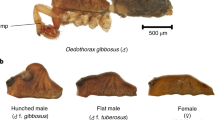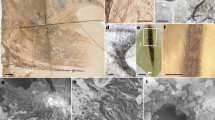Abstract
MR. PAUL 'SPINASSE has recently pointed out1 some difficulties preventing complete acceptance of the growth rate theory of Lillie and Juhn2 in which bilateral gynandromorphism of individual feathers is supposedly explained. The existence of differences in rates of growth of individual barbs, by which these authors explain different degrees of susceptibility to female hormone, would be proved if, in successive cross sections of a feather, barbs arising near the ventral point fused with the rhachis at a higher level on one side than on the other, but this has never yet been observed.
This is a preview of subscription content, access via your institution
Access options
Subscribe to this journal
Receive 51 print issues and online access
$199.00 per year
only $3.90 per issue
Buy this article
- Purchase on Springer Link
- Instant access to full article PDF
Prices may be subject to local taxes which are calculated during checkout
Similar content being viewed by others
References
NATURE, 133, 330, March 3, 1934.
"Physiol. Zool.", 5, 1932.
"Morph. Jahr", 15; 1899.
Bull. Mus. Comp. Zool Harv., 40; 1902.
Author information
Authors and Affiliations
Rights and permissions
About this article
Cite this article
HOSKER, A. Bilateral Gynandromorphism in Feathers. Nature 133, 382–383 (1934). https://doi.org/10.1038/133382b0
Issue Date:
DOI: https://doi.org/10.1038/133382b0
This article is cited by
-
Bilateral Gynandromorphism in Feathers
Nature (1936)
Comments
By submitting a comment you agree to abide by our Terms and Community Guidelines. If you find something abusive or that does not comply with our terms or guidelines please flag it as inappropriate.



